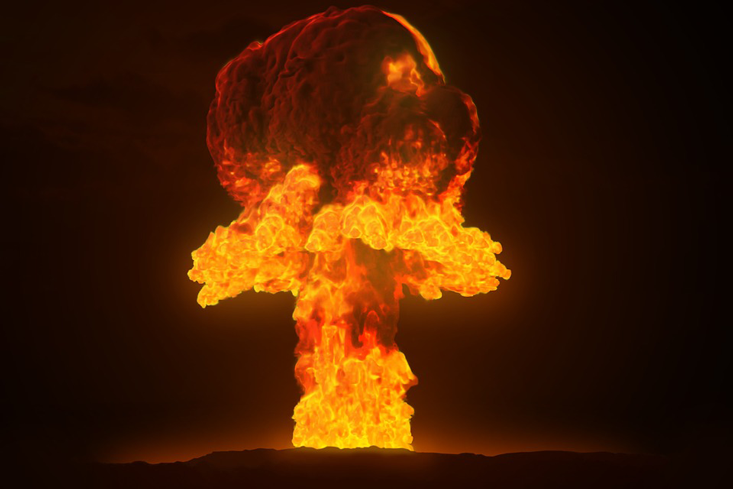
There’s a saying, in conservation biology, credited to the plant ecologist Frank Egler: Ecosystems are not just more complex than we think, they’re more complex than we can think. With doomsday narratives swirling about nuclear war, the existential threat of artificial intelligence, and runaway global warming, it’s one we might want to constantly bear in mind. We are deeply interconnected with myriad species disappearing from complex ecosystems—and we might be next.
The end may not necessarily be “the end,” though. At least not for our genomes. In case an extinction event ever wipes us out we could theoretically (at some future point) program an artificial intelligence to survive the fallout and bring us back in a genetically similar form. Projects are already underway to recreate close versions of extinct species. Most advocates of “de-extinction” argue that it might allow us to restore depauperate ecosystems with animals that can carry out the ecological roles of extinct species. Some even say that bringing back a woolly mammoth, Tasmanian tiger, or passenger pigeon could help us atone for our ecological sins since we (though it is still debated for the mammoth) made those animals disappear. Instead of mourning our loss, they urge us to push on, and use our advanced artificial selection, cloning, and genome engineering techniques to get close proxies of the vanished species back into the wild.
Who would teach the newborns how to be the humans we’re meant to be?
But I’ve interviewed many conservation biologists about de-extinction for my book, Rise of the Necrofauna: The Science, Ethics, and Risks of De-Extinction, out this year, and an overwhelming majority are concerned that it’s a moral hazard. If the public ever comes to feel that we can bring extinct species “back to life” at a more opportune time, society might relax even more than it already is about letting endangered species go extinct.
In July, for example, University of California, Santa Cruz conservation biologist Claudio Campagna and colleagues wrote an article arguing that the “promise of de-extinction may hasten continuing extinction.” They put lots of stock in the power of language—the way we frame problems—to “influence attitudes, shape thoughts and imagination, and create ethical blindness.” Specifically, the “language of de-extinction,” they argue, “masks and distracts us from the essential work of facing up to what we have done, and are doing, to life itself.” Consider that pernicious trend when applied to our possible future extinction. If one day an A.I. could synthesize our genomes, put them inside synthetic embryos, and grow them into people that have our unique genetic traits, would we be less complacent about safeguarding our future now, while we’re still here, or more?
Another problem with the prospect of “de-extincting” ourselves is that it gives us, Campagna and his colleagues note, “the impression that extinction is reversible and, thus, diminishes the gravity of the human annihilation of species.” The result is not fully grasping the environment we’re meant to re-emerge in.
Bringing back a woolly mammoth, Tasmanian tiger, or passenger pigeon could help us atone for our ecological sins.
Consider the Yangtze River dolphin. It was deemed extinct in 2006, pushed past the brink by pollution and rampant fisheries in the river it was named after. If it were to be brought back in some close form and reintroduced into its former habitat, it would only be a matter of time until it went extinct “a second time.” The language of de-extinction glosses over this reality—that not all habitats are available to support a species that returns. No one is working on “de-extincting” the Yangtze River dolphin for this important reason, but its case is helpful to consider in light of our own possible return. What would our habitat be like after nuclear fallout or another climate catastrophe? The environment that was once able to support us would be utterly despoiled—an apocalyptic place—and whatever versions of us were “de-extincted” would have a hard time surviving “in the wild.” We’d live in artificial habitats—presumably like what we’d have to do on Mars, but on our own planet. We’d still be “extinct in the wild” with no natural ecosystem to support us.
There’s also the difficulty of having some primate available that’s genetically and physically similar enough to grow and birth our synthetic embryos. Presumably no other animals enough like us would have survived the extinction event. Perhaps the A.I. would design some artificial wombs to grow us in, but who would teach the newborns how to be the humans we’re meant to be? Who will provide the necessary social context for normal development, language skills, and all the rest? The A.I.? In every imaginable case, new post-humans would be very different in their epigenetics and culture than those of us alive today.
No scientist is suggesting we prepare to “de-extinct” ourselves—yet. But what if one day someone does? Consider that most people value our own species more than other forms of life, chalking it up to the fact that we can contemplate the universe and our own place within in it: We are, as far as we know, the only living things through which the universe can reflect on itself. That may be a compelling enough reason to try and bring us back.
In March, the American Museum of Natural History, in New York, hosted an event, titled “2017 Isaac Asimov Memorial Debate: De-Extinction.” In the Q&A session, the question of whether humans deserve to be “de-extincted” came up. George Church, a geneticist and molecular engineer at Harvard and the Massachusetts Institute of Technology (who wrote the forward for my new book, Rise of the Necrofauna), and a member of the debate panel, said, “I would love to be de-extincted,” but “there’s the bit about the memories” and “I don’t know if I deserve it.” Another panelist, Gregory Kaebnick, a biotech ethicist at the Hastings Center, said, “The problem with de-extincting a sentient creature like us” is that we’d “be stuck in the zoo, and it would be almost certainly extremely frightening and scary and lonely.”
We can never resurrect the way we live if we all die. Whatever future intelligence could do our “de-extincting” would create a different people for a changed world.
Britt Wray is the author of Rise of the Necrofauna: The Science, Ethics, and Risks of De-Extinctionand a presenter for BBC Tomorrow’s World. Wray holds a bachelor’s degree in biology and is a Ph.D. candidate in science communication with a focus on synthetic biology at the University of Copenhagen.






























